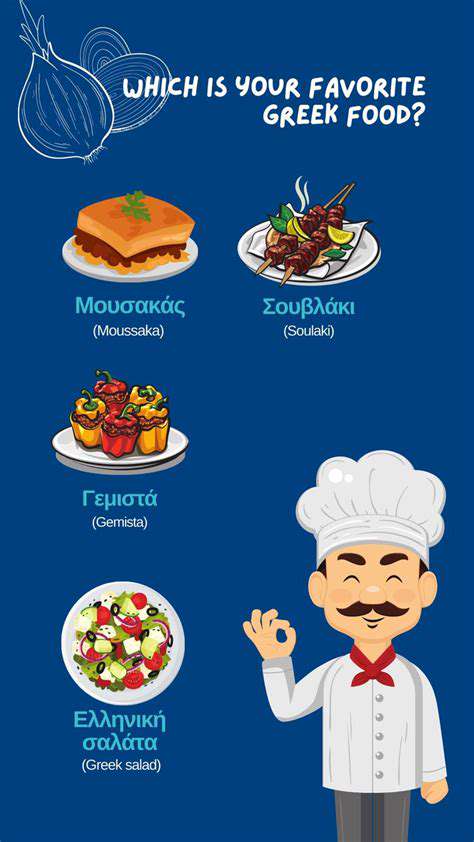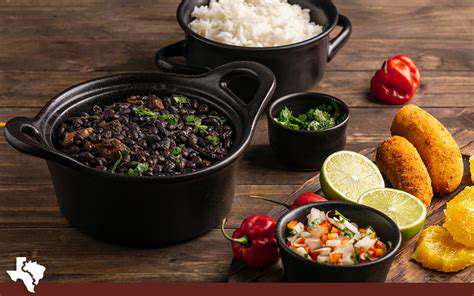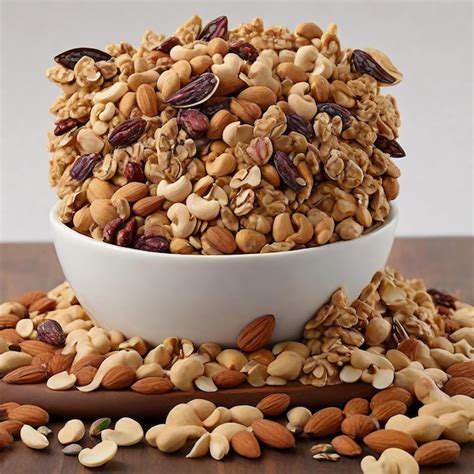Eating Habits in Greece: Mediterranean Diet Staples
Olive Oil: A Cornerstone of Greek Cuisine
Olive oil isn't just a cooking ingredient in Greece; it's a fundamental part of the cultural identity. From drizzling it over salads to using it in countless dishes, Olive oil permeates Greek cooking, providing a healthy and flavorful base for countless meals. Its rich, distinctive aroma and smooth texture enhance the natural tastes of fresh ingredients, making it an essential part of the Greek diet's inherent health benefits.
The quality of olive oil varies significantly, and Greeks are particularly discerning in their selection. They understand that the quality of the oil directly impacts the taste and nutritional value of their food. This commitment to high-quality olive oil reflects a deep appreciation for the land and its produce, an appreciation that extends to all aspects of their culinary traditions. Using only the freshest, highest-quality olive oil is a cornerstone of Greek culinary practices and a vital part of their overall healthy eating habits.
Fresh Produce: The Heart of the Greek Plate
Greek cuisine emphasizes fresh, seasonal produce. Abundant sunshine and fertile land nurture a wide variety of vegetables, fruits, and herbs, which feature prominently in Greek dishes. From juicy tomatoes and crisp cucumbers to vibrant peppers and fragrant herbs like oregano and dill, fresh produce forms the very heart of Greek meals.
The use of seasonal ingredients is not merely a matter of availability but also a reflection of the deep connection Greeks have with their environment. They understand the importance of consuming produce that is at its peak ripeness and flavor, ensuring optimal nutritional benefits and a truly exceptional taste experience. This commitment to fresh, seasonal ingredients is a hallmark of Greek culinary traditions and a significant contributor to their healthy dietary habits.
Seafood: A Taste of the Aegean Sea
The abundance of the Aegean Sea provides Greeks with an unparalleled array of fresh seafood. From succulent grilled fish to flavorful seafood stews, the bounty of the sea is a vital component of the Greek diet. The Mediterranean climate and the unique geography of the region contribute to the exceptional quality and flavor of the seafood. The fresh taste of the sea, combined with the simple preparation methods often employed, highlights the natural goodness of these marine delicacies.
Legumes and Grains: A Balanced Approach to Nutrition
Beyond seafood and produce, Greek cuisine incorporates a variety of legumes and grains. Beans, lentils, and chickpeas are staples in many dishes, providing essential nutrients and fiber. Whole grains like bulgur wheat and barley also play a significant role in the Greek diet, adding another layer of nutritional complexity. The use of legumes and grains in Greek cuisine exemplifies a balanced approach to nutrition, providing a comprehensive range of nutrients to support a healthy lifestyle.
Dairy Products: A Taste of Tradition
Greek yogurt and feta cheese are iconic dairy products, deeply embedded in Greek culinary traditions. These dairy items provide essential protein and calcium, contributing to a balanced and healthy diet. Their unique tangy flavors complement many dishes, adding a distinctive touch to Greek cuisine. The fresh and wholesome quality of Greek dairy products is a testament to the commitment to quality ingredients, a significant part of the Greek culinary heritage.
The Importance of Herbs and Spices: Enhancing Flavor and Health
A wide array of fresh herbs and spices, such as oregano, mint, dill, and thyme, are used to enhance the natural flavors of Greek dishes. These aromatic additions not only elevate the taste of the food but also provide valuable antioxidants and other health benefits. The skillful use of herbs and spices in Greek cuisine showcases a deep understanding of how to enhance both the taste and the nutritional value of meals. This appreciation for flavor and health is a hallmark of Greek culinary traditions and is an essential component of their healthy eating habits.
The Importance of Seafood and Fish in Greek Cuisine

Nutritional Benefits of Seafood
Seafood, particularly fish, is an excellent source of high-quality protein, essential vitamins, and minerals. This makes it a crucial part of a balanced diet, especially for children and adolescents who are still developing. The protein in fish is easily digested and utilized by the body, providing the building blocks needed for growth and repair of tissues. Furthermore, seafood is rich in omega-3 fatty acids, which are crucial for brain function, eye health, and reducing the risk of chronic diseases.
Fish also provides vital nutrients like vitamin D, which is essential for calcium absorption and bone health. Seafood is also a good source of iodine, a mineral vital for thyroid function, and various B vitamins that support energy production and metabolic processes. The combination of these nutrients makes seafood a truly beneficial food for overall health and well-being.
Environmental Sustainability of Seafood
Choosing sustainable seafood is not just about personal health, but also about protecting our oceans. Overfishing and destructive fishing practices can severely damage marine ecosystems, threatening fish populations and the delicate balance of marine life. By selecting seafood from sustainable sources, we can contribute to the long-term health of our oceans and ensure that future generations can enjoy their bounty.
Consumers can make informed choices by looking for certifications that guarantee sustainable fishing practices. These certifications often indicate that the fish was caught using methods that minimize environmental impact and support healthy fish populations.
Economic Impact of the Seafood Industry
The seafood industry plays a significant role in the global economy, supporting livelihoods in coastal communities around the world. Fishing and aquaculture provide employment for millions of people, contributing to local economies and supporting families. The industry also drives economic activity through processing, distribution, and retail, creating a complex web of interconnected businesses. This economic importance highlights the need for responsible management and sustainable practices within the industry to ensure its long-term viability.
From small-scale fishing communities to large-scale seafood processing plants, the industry touches many lives and contributes significantly to the global economy. Understanding the economic aspects of seafood is crucial for supporting communities that rely on it for their livelihoods.
Health Risks Associated with Consuming Certain Seafood
While seafood offers numerous health benefits, it's important to be mindful of potential risks associated with consuming certain types of fish. Some fish, particularly larger predatory species, can accumulate high levels of mercury, which can be harmful to human health. This is a concern, especially for pregnant women and young children, whose developing nervous systems are more susceptible to the negative effects of mercury exposure.
It's crucial to choose seafood responsibly and consult with healthcare professionals if you have concerns about mercury levels in certain fish. By making informed choices and understanding the potential risks, you can enjoy the benefits of seafood while minimizing potential health concerns.
Beyond the Basics: Exploring Traditional Greek Dishes

Beyond the Fundamentals of Traditional Crafts
Traditional crafts, often passed down through generations, represent more than just decorative objects; they embody cultural heritage and historical significance. Understanding the deeper meaning behind these crafts provides a richer appreciation for the artistry and skill involved. Beyond the basic techniques, lies a wealth of knowledge about the materials used, the symbolism embedded within the designs, and the social contexts that shaped their creation.
The Role of Materials in Traditional Crafts
The materials used in traditional crafts are often carefully selected for their specific properties and cultural significance. For example, certain woods might be associated with strength and resilience, while specific clays might hold spiritual meaning within a particular community. This meticulous selection of materials is crucial to the overall aesthetic and symbolic impact of the finished product. Understanding these choices is key to appreciating the depth of the craft.
Cultural Significance and Symbolism in Traditional Crafts
Many traditional crafts incorporate intricate symbolism that reflects the beliefs, values, and stories of a particular culture. These symbols might represent deities, natural elements, or historical events. Understanding these symbols allows us to connect with the cultural context from which the craft originated and appreciate the rich narrative it contains. This symbolic language often goes beyond simple decoration, carrying profound meaning and cultural significance.
Historical Context and Evolution of Traditional Crafts
Traditional crafts often evolve over time, adapting to changing social and economic conditions. Historical events, technological advancements, and shifts in cultural priorities can all influence the techniques, materials, and even the intended purpose of these crafts. Examining this evolution provides insight into the dynamic relationship between tradition and innovation. The historical context surrounding a craft is essential to fully understanding its development and enduring relevance.
Preservation and Revitalization of Traditional Crafts
Many traditional crafts are facing challenges in the modern world, including declining demand, the loss of skilled practitioners, and the impact of mass-produced goods. Efforts to preserve and revitalize these crafts are crucial to maintaining cultural heritage and supporting local communities. These efforts involve training programs, workshops, and community initiatives aimed at keeping these valuable traditions alive and accessible to future generations. Preserving these practices is vital to ensuring cultural continuity.
The Modern Application of Traditional Crafts
While rooted in history, traditional crafts can also find modern applications. Contemporary designers and artists are increasingly incorporating elements of traditional techniques and aesthetics into their work. This fusion of old and new creates innovative designs that honor the past while embracing the present. This blending of traditions with modern sensibilities is a testament to the enduring appeal and versatility of traditional craftsmanship. This innovative approach often results in unique and captivating designs.
Magnesium is a vital mineral crucial for numerous bodily functions, including muscle relaxation and nerve function. Deficiencies in magnesium are strongly linked to migraines and tension headaches. Consuming magnesium-rich foods like leafy greens, nuts, and seeds can potentially alleviate headache symptoms and prevent future occurrences.
The Role of Dairy and Grains in Greek Meals
Dairy in Greek Cuisine
Dairy products, particularly yogurt and feta cheese, are integral to Greek meals. Yogurt, often enjoyed plain or with honey, is a staple breakfast food and a versatile ingredient in dips, sauces, and desserts. The tangy, creamy texture of yogurt adds a unique flavor dimension to many dishes, complementing the fresh herbs and vegetables frequently used in Greek cuisine. This ubiquitous presence of yogurt showcases the importance of dairy in the Greek diet and its role in achieving a balanced and healthy meal.
Feta, a salty, crumbly cheese, is a cornerstone of Greek cuisine. Used in salads, baked dishes, and as a topping for grilled meats, feta's distinct flavor profile adds a salty complexity to Greek meals. Its firm texture, when combined with fresh vegetables and olives, provides a delightful textural contrast that enhances the overall dining experience. Feta cheese is also an important part of Greek appetizers and spreads, making it a crucial component of Greek hospitality and social gatherings.
Grains in Greek Diet
Grains, particularly bread and pasta, form a vital part of the Greek diet. The variety of breads, ranging from crusty loaves to soft pita, is a testament to the cultural importance of bread in Greek meals. Accompanying many dishes, bread serves as a vehicle for dipping sauces and enjoying the flavors of the food. The use of grains in Greek cuisine extends beyond bread, with pasta also playing a significant role in certain dishes.
Importance of Fresh Produce
Greek meals are often centered around fresh, seasonal produce. Vegetables like tomatoes, cucumbers, peppers, and zucchini are frequently featured in salads, stir-fries, and as side dishes. The abundance of fresh herbs, such as oregano, mint, and dill, further enhances the flavors of these dishes. The emphasis on seasonal produce reflects the Mediterranean climate's bounty and contributes to the vibrant and healthy nature of Greek meals.
The Significance of Olive Oil
Olive oil is a critical component of Greek cooking. Used for dressings, sautéing, and baking, olive oil adds a distinctive flavor and richness to Greek dishes. The quality of olive oil is highly valued, reflecting the importance of fresh, high-quality ingredients in Greek culinary traditions. The use of olive oil not only enhances the taste of food but also aligns with the health benefits associated with Mediterranean diets, showcasing the practicality of this cooking method in the Greek culinary landscape.
Meat and Seafood in Greek Meals
While not as prominent as vegetables and dairy, meat and seafood are still important components of Greek meals. Lamb and chicken are common choices, often grilled or roasted. Seafood, particularly fish and shellfish, is prevalent in coastal regions, highlighting the abundance of the Mediterranean Sea. The preparation methods for meat and seafood in Greek cooking often prioritize grilling, roasting, or baking, allowing the natural flavors to shine through. These methods, combined with the fresh produce and dairy products, create a balanced and flavorful culinary experience.
The Cultural Significance of Food in Greek Society

Culinary Traditions and Identity
Food plays a pivotal role in shaping cultural identities, reflecting historical events, social structures, and religious beliefs. Culinary traditions often serve as a tangible link to ancestral heritage, passed down through generations of families. These traditions encompass not only the recipes themselves but also the rituals surrounding food preparation, consumption, and even the stories associated with specific dishes.
From the elaborate feasts of ancient civilizations to the simple meals shared within modern families, food is deeply intertwined with our sense of belonging and our understanding of who we are. Regional variations in cuisine frequently reflect geographical influences and historical migrations, showcasing the complex interplay between culture and geography.
Food as a Social Glue
Food is often a cornerstone of social gatherings, from intimate family dinners to large-scale celebrations. Sharing a meal fosters connection and strengthens bonds between individuals and communities. The act of preparing and consuming food together can create a sense of shared purpose and belonging, regardless of background or circumstance.
Traditional meals, often prepared and shared collectively, are powerful social forces. They can be vehicles for storytelling, teaching, and cultural preservation. The act of cooking and eating together reinforces social cohesion and strengthens community ties.
Furthermore, food festivals and communal meals are significant occasions for cultural exchange and celebration, bringing people together to share in a common experience.
Food and Cultural Expression
Food is a powerful form of cultural expression, reflecting a society's values, beliefs, and artistic sensibilities. The preparation and presentation of meals often embody artistic creativity and technical skill. From elaborate plating to intricate culinary techniques, food can be appreciated not only for its taste but also for its aesthetic appeal.
Different cultures have unique approaches to food preparation, reflecting their distinct histories and values. The use of specific ingredients, culinary techniques, and serving styles can all be seen as expressions of cultural identity.
The way a culture approaches food often reveals underlying values and beliefs about hospitality, community, and even spirituality. These expressions, often subtle, can provide valuable insights into the deep-seated values that shape a society.
The symbolism inherent in certain foods can be profoundly significant, conveying messages related to status, celebration, or even mourning. Understanding these symbolic layers adds another dimension to our appreciation of food as a cultural phenomenon.
Food is a powerful form of artistic expression, a testament to human ingenuity and creativity.
Through its diverse forms and preparations, food embodies the unique spirit of each culture, providing a window into its rich history and vibrant traditions.
Read more about Eating Habits in Greece: Mediterranean Diet Staples
Hot Recommendations
- Traditional Foods for Day of the Dead
- Food Etiquette in Italy: Pasta Rules!
- Best Family Friendly Restaurants with Play Areas in [City]
- Review: The Best [Specific Dessert] Place in [City]
- Top Ice Cream Parlors in [City]
- Traditional Foods for Halloween
- The History of the Potato in Ireland
- Best Vegan Pizza Joints in [City] [2025]
- Best Bakeries for Sourdough Bread in [City]
- Food Culture in Argentina: Asado and Wine

![Best Vegetarian Restaurants in [City]](/static/images/28/2025-05/LocalFavoritesandHiddenGems.jpg)
![Best Ethiopian Restaurants in [City]](/static/images/28/2025-05/EmbracingtheAuthenticAmbiance3AFindingYourPerfectSpot.jpg)








